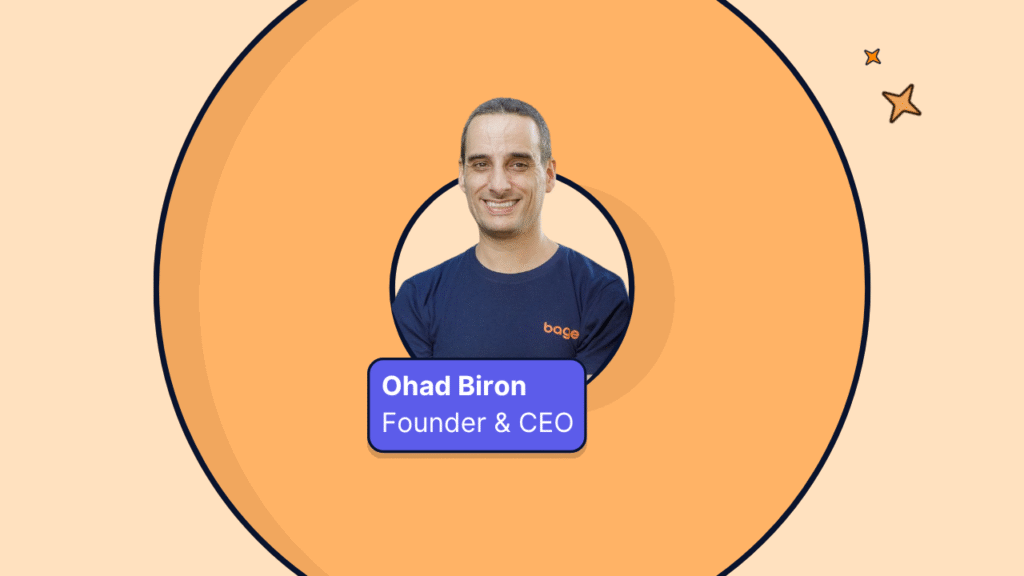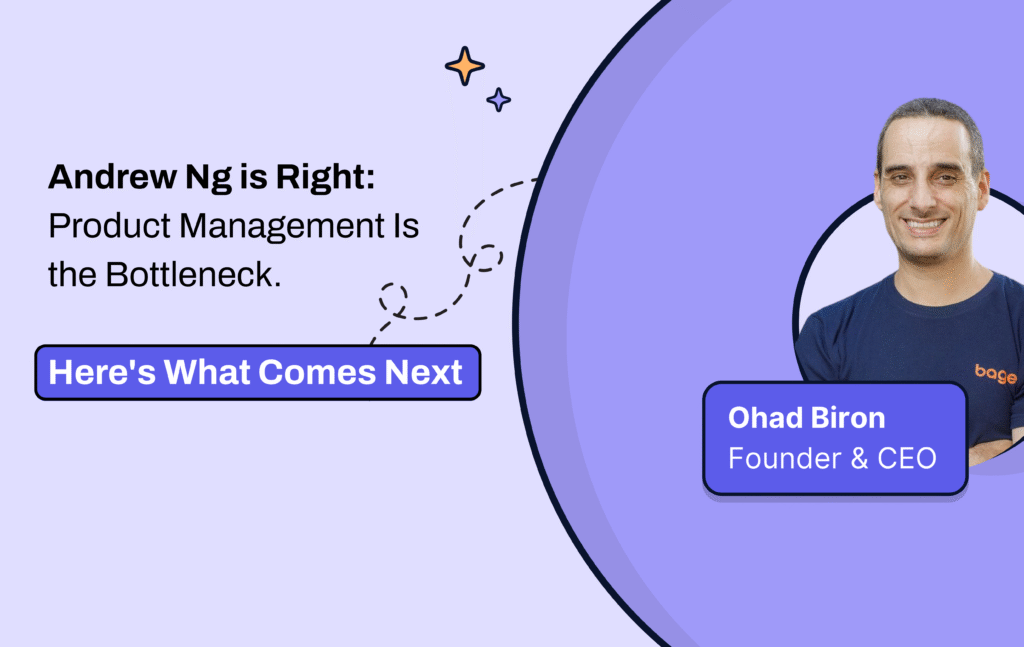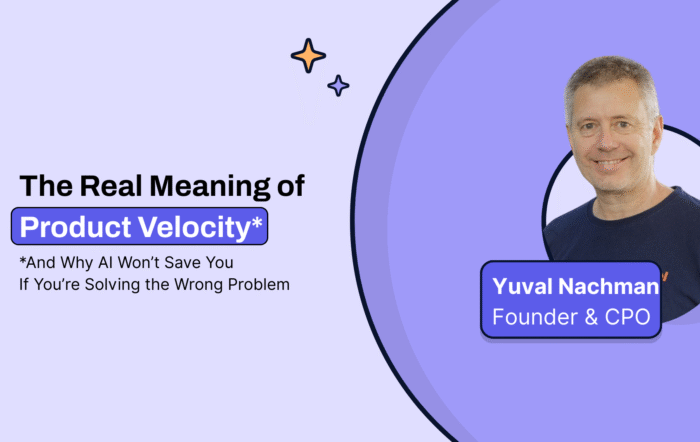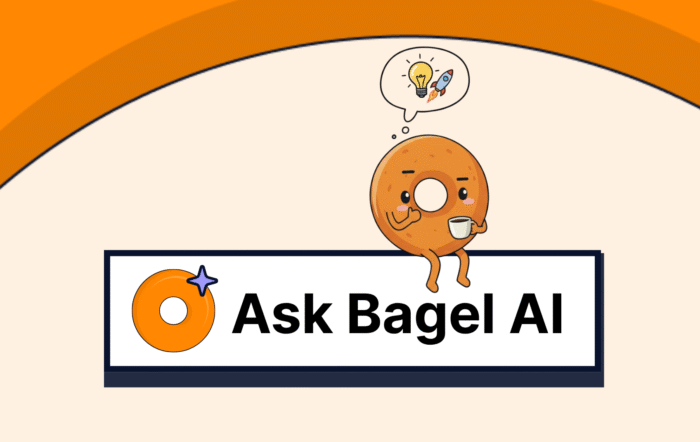“Engineers are 10x faster. Product managers haven’t sped up at the same rate. Now they’re the bottleneck.”
Andrew Ng
When Andrew Ng said this in his lecture, it was more than a passing remark. It was a reality check. For many of us building in the AI space, it echoed something we’ve been watching unfold across dozens of product teams.
Engineering is accelerating. Product is operating with systems built for another era.
This post is not a product pitch. It is a call to reconsider how product teams need to operate inside modern organizations shaped by AI.
What Andrew Got Right
AI has transformed what engineering teams can deliver. Today, a startup can go from idea to working prototype in hours. Teams are shipping code that once took quarters in the span of a few days. What used to require heavy planning is now being rebuilt weekly with minimal friction.
Engineering has upgraded. Product workflows are lagging.
Why? Because:
- Discovery remains manual
- Feedback is scattered across tools and teams
- Revenue impact is rarely quantified
- Prioritization is often reactive and intuition-driven
Ng’s point highlights a systemic imbalance that’s becoming hard to ignore.
But the Landscape is Changing
“Yesterday, a team proposed a ratio of one product manager to 0.5 engineers… That would have sounded absurd a year ago.”
Andrew Ng
There’s a common but flawed assumption that product management is standing still while engineering races ahead. The truth is more nuanced.
Leading product managers are adapting. They’re not waiting for permission to catch up. They’re actively redesigning their workflows using AI not to automate judgment, but to create the conditions for better, faster decisions.
This is what we’re seeing:
- PMs now reduce validation cycles from weeks to hours by using AI to synthesize customer conversations, identify repeating themes, and simulate early user reactions.
- Many are sketching out prototypes and basic interactions with no-code builders or LLM-based tools, closing the gap between idea and feedback.
- Some feed raw datasets into AI tools to surface insights and generate early-stage recommendations without needing help from a data team.
- Others are building their own agents with small, context-aware tools that monitor customer forums, aggregate feedback, or highlight competitive gaps.
This shift, although it doesn’t eliminate the bottleneck, changes what the bottleneck is. It moves the conversation from “PMs are stuck” to “what new leverage can they create?”
AI for Product Managers: Present and Future
We’re still early in understanding the full potential of AI for product work. What’s clear now is that AI isn’t just a layer to speed up execution and it’s changing how decisions are made, what gets prioritized, and how quickly teams can learn from users.
Today, AI helps product managers:
- Get clarity from unstructured feedback without reading every transcript
- Spot trends and urgency across accounts before they escalate
- Test hypotheses with simulated users or conversational agents
- Shorten the distance between problem and prototype
But the next wave is even more powerful:
- PMs will have AI co-pilots that run continuous discovery in the background
- Roadmaps will evolve from static documents to adaptive plans updated with live feedback and business impact
- Prioritization will become a dynamic model, not a static spreadsheet
- Product intelligence will feed back into strategy in real time, not quarterly retros
AI is not replacing product managers, It’s upgrading them. The best PMs of the future won’t be defined by how much they can manage but by how clearly they can decide, learn, and drive outcomes in systems that move faster than ever.
Reframing the Role of Product Management
The idea that product managers are the bottleneck only holds if we expect them to work in isolation or rely entirely on outdated input models.
Instead, there’s a growing opportunity for product teams to lead by reframing their work around:
- Fast, evidence-backed validation
- Tighter loops with GTM and support
- Direct visibility into business outcomes
- Toolchains that reduce friction between insight and decision
In other words, AI is giving product leaders a new kind of operating system, turning them into domain experts
Where Bagel AI Fits In
This is the shift we built Bagel AI to support. We’ve seen how frustrating it can be for PMs to chase context across multiple systems, miss key patterns, or prioritize based on partial information.
So we focused on helping product teams:
- Surface product pains and gaps, linked to revenue signals
- Capture customer feedback directly from GTM tools
- Eliminate duplicates or vague requests by clustering themes
- Push product updates and visibility back into tools everyone uses
Bagel AI exists to bring clarity where there’s noise, and to help decisions keep pace with delivery.
Looking Ahead
We’re at an inflection point. Engineering is moving fast. That doesn’t mean product managers must be reactive, It means they must evolve their toolkit.
The teams that learn how to align speed with evidence, and strategy with data, will outperform. The best product managers won’t disappear. They’ll become the force-multipliers inside every product-led company.
Andrew Ng surfaced a deep tension. The response isn’t to panic, It’s to adapt.
Ohad Biron is the Co-Founder and CEO of Bagel AI – the first AI-native Product Intelligence platform. He’s spent the last decade building in the space between revenue, product, and customers. His mission: eliminate guesswork from product decisions and help teams ship what actually matters.




